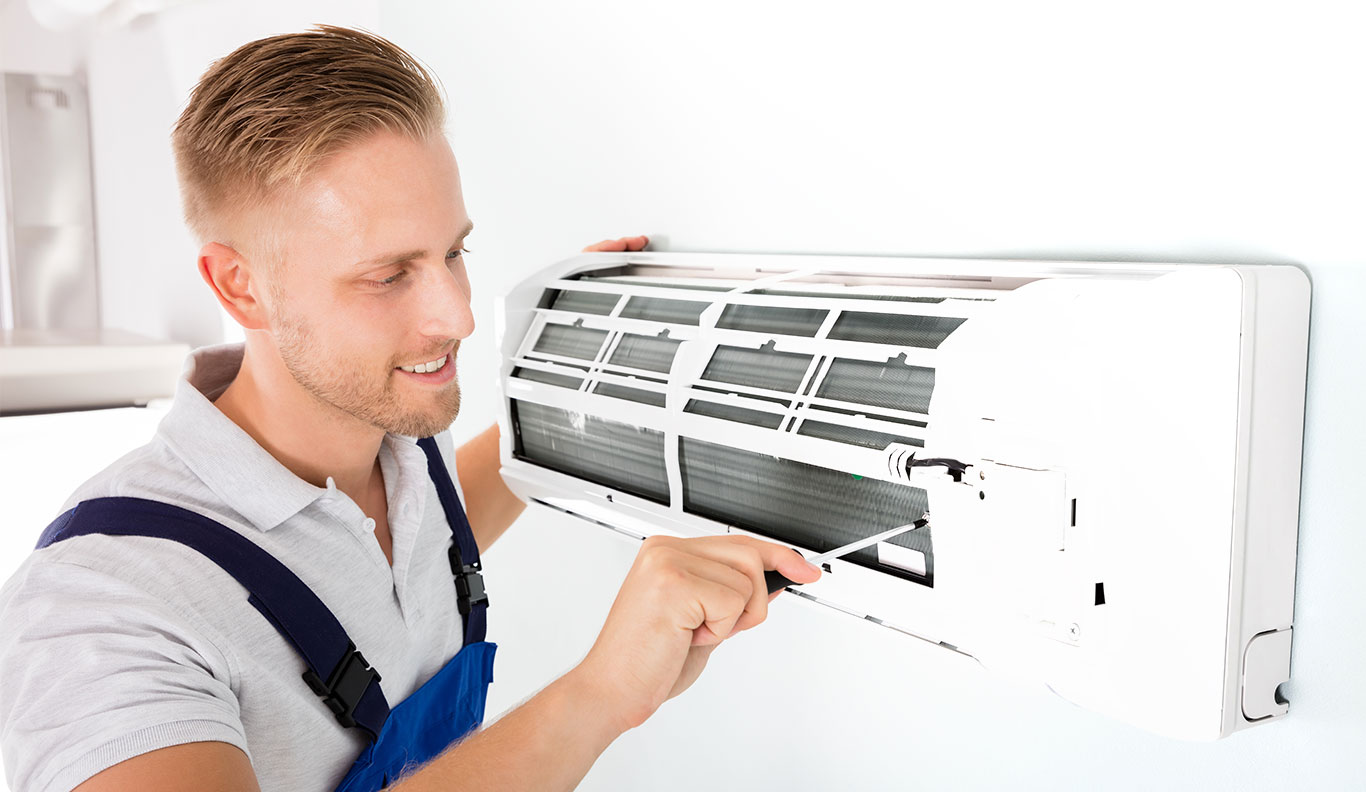During the warmer months of the year, your home depends on a fully functional air conditioning system to keep the inside temperature comfortable. We offer HVAC services that ensure your system works at its best from spring through fall. Our team specializes in air conditioning installation for home and business owners who need dependable cool air for their families, staff, and customers. Before we arrive to install your new AC system, there are steps you can take to prepare for it. Preparing the site in your home for a new AC system doesn’t require any specialized training or expertise in HVAC products, but we’ve provided helpful information to make sure you know the types of AC systems available, how to prepare for your installation, and what steps you can expect the contractor to take in the process. Air conditioning installation is something you should expect when you own or manage a home or business, so be ready with Edison Heating & Cooling.
Getting to Know the Types of AC Systems
You don’t have to understand the ins and outs of HVAC systems to choose a model that’s right for you, but it does help to be familiar with the types of units available. We want you to make the best investment possible for your space, so we’ve described some of the most common types of AC systems for your home or business:
Traditional Split System – This conventional model of AC system has an outdoor unit installed next to the exterior wall adjacent to where an indoor unit is installed. The cold air gets distributed through large ducts running throughout a structure.
Ductless Mini-Split System – Ductless mini-splits have individual evaporator and fan units for each room in a house or business. Since the units operate independently, you have better control of each room’s temperature.
Geothermal System – This system cycles fluid, such as water or refrigerant, through loops of pipes placed underground to transfer heat from the air in your home or business to the ground.
When heating a structure is the goal, the system reverses the process and transfers heat from the earth to a structure’s air.
How to Prepare for Your New AC System
Don’t let your installation day sneak up on you without preparing your home or business. We can perform your air conditioning installation a lot quicker and simpler when you take the following actions to ensure a smooth process:
Prepare the Ductwork – Contractors can’t install your new AC system if your ductwork is filled with dust and dirt. Have your ducts thoroughly cleaned and aired out before the installation, and be sure to seal them.
Make Room for the AC System – Before the new unit arrives at your home or business, clear the area of clutter and obstacles, so the installers have room to work in the designated room or rooms. It’s also wise to make sure the measurements for the new system fit in the space.
Clear a Path for the Contractor – Move tables, toys, rugs, and any other obstacles out of the way to clear a path from the entrance to the installation area. This minimizes the chance of property damage and accidents when the contractor is working.
Review the System Before It Gets Installed – On the day of installation, check your new system to verify it’s the one you ordered. During your consultation, the contractor will have performed a load calculation to determine the type of AC unit your space needs. Making sure the arriving AC unit matches your order will help you prevent problems later on.
Steps the Contractor Should Take During Installation:
Something to be aware of for your installation is the terminology contractors use for AC systems. Heating system performance factor (HSPF) is the rating that determines a heat pump’s efficiency. Annual fuel utilization efficiency (AFUE) is the percentage of energy your system uses that’s converted into usable heat. Seasonal energy efficiency ratio (SEER) is a rating of your cooling system’s efficiency. Energy efficiency ratio (EER) is an energy efficiency rating based on how your unit would react to temperatures of 95 degrees outside, 80 degrees inside, and humidity of 50 percent. Standard steps your contractor will take during an air conditioning installation include the following:
Remove the Old AC System – This part of the process may involve the contractor accessing your attic, basement, or crawl spaces where the AC system is located. After cutting the power, they remove the refrigerant in the AC system, disassemble it, and remove the old equipment.
Modify or Repair Ductwork – Repairing or replacing ductwork might be necessary for your installation. One or more of our team members will take care of this while our lead installer starts assembling your new AC system.
Install the New AC Unit – Our crew will install your new air conditioning system according to the manufacturer’s specifications to ensure proper function. We may perform installations inside and outside your home or business, depending on the type of AC system.
Test the New AC System – After the contractor has finished installing the AC unit, it goes through vacuum and pressure tests before we charge the system using new refrigerant. A complete inspection is performed, and then we activate and retest the system once we’ve added the refrigerant.
Contact us for Professional Service:
Make our team call you for air conditioning installation at your home or business. Our team of technicians has ample training and experience handling HVAC systems, and we perform high-quality work that ensures your air conditioning system runs optimally for years to come.

